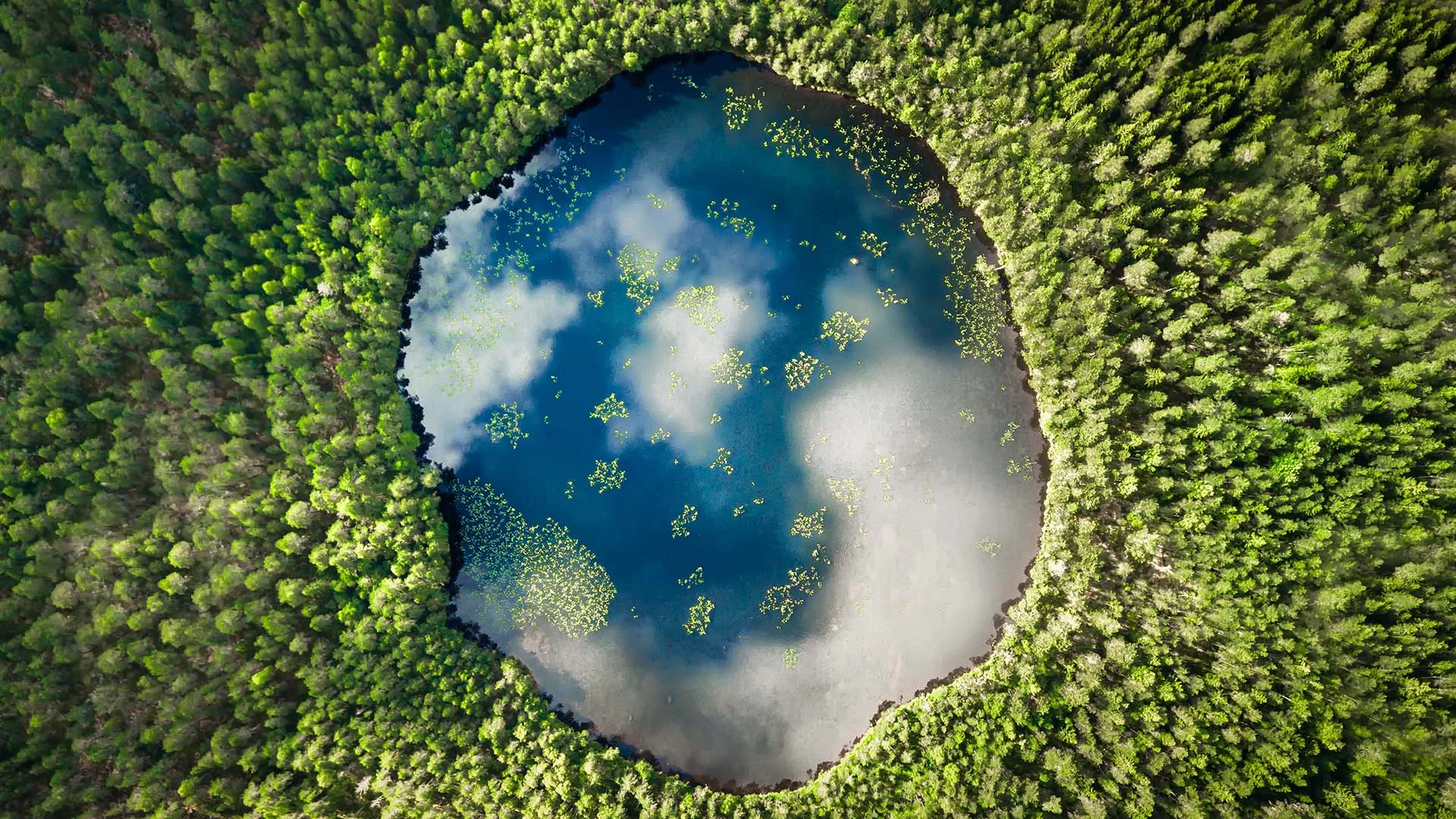
Circular economy
5 minute read
3 top trends helping drive circularity worldwide
While linear economies follow a “take-make-use-dispose” model, leading to unnecessary waste and environmental degradation, circular economies rely on a “reduce, reuse, and recycle” ethos, ensuring resources are continually repurposed wherever possible. Long-term sustainability requires a global transition to a circular economy, and we can already see it in the making.
According to the World Bank’s first comprehensive report on the circular economy in the EU, maintaining a largely linear economy will be increasingly unsustainable over time. As the demand for housing, transportation, products, and services grows, so will the need for raw materials, making the life cycle and availability of those materials a crucial consideration.
Circular economy strategies can help reduce global greenhouse gas (GHG) emissions by 40% by 2050, as estimated by the United Nations Development Programme. Fortunately, the transition to circularity is already underway in many parts of the world. This article examines three trends helping to drive this transition forward.
1. Switching to more sustainable raw materials

“In the past three to four years, people have begun feeling more personally affected by climate change, which is putting pressure on various parts of the supply chain to adopt more circular practices,” says Lars Börger, Vice President of Strategy and Development, Renewable Polymers and Chemicals at Neste.
Incorporating recycled materials into their products is one of the ways that many businesses are reducing their carbon footprint and demonstrating a commitment to sustainability. Whether driven by legislation, corporate strategy, or consumer demand, more companies are replacing virgin resources with ones that are reused, recycled, or renewable. Neste RE™, for example, a raw material for plastics production made from 100% renewable and recycled inputs, is being implemented as a replacement for fossil-based raw materials in plastics value chains for a number of brands and products. Eventually, circular materials in combination with bio-based or other renewable materials provide a solid way out of the dependence on fossil resources.
This trend can be seen across a wide range of industries, from fashion (see for example Nike’s vision for a fully circular supply chain or the industry’s growing interest in textile recyclability) to transportation where renewable diesel and sustainable aviation fuel – often produced primarily from waste and residues – are beginning to replace their fossil counterparts, to construction, where sustainable material choices are being used to reimagine the future of the built environment.
The growing demand for more sustainable raw materials is a cornerstone of the emerging circular economy, as it both conserves natural resources and fosters innovation in design and manufacturing techniques. As more and more businesses participate in the push, these challenges can be increasingly solved. In turn, industry and consumer standards continue to rise, propelling the global economy closer to circularity.
Börger says this two-way pressure on businesses to act responsibly — from consumers on one hand and regulators on the other — is helping to drive circular innovation and a more sustainable mindset overall.
2. New legislation and regulation supporting circularity

“Much of the fundamental shift toward circularity will be guided by legislation,” says Heikki Färkkilä, Vice President, Chemical Recycling at Neste. “Making the transition stick will take different incentives at multiple levels of government.”
We are seeing this happening with numerous major pieces of legislation and regulations coming through all over the world.
For example in the EU, the Packaging and Packaging Waste Directive not only aims to reduce the creation of packaging waste but also to promote a circular packaging economy through requirements for packaging raw materials and recyclability. And in California, a new law requires the phase-out of single-use packaging and foodware, while the U.S. as a whole is implementing a number of broader programs and policies to advance circularity.
Extended Producer Responsibility (EPR) programs are also gaining traction, and hold producers accountable for the end-of-life management of their products. This pushes brands to design for recyclability and reuse, further promoting the circular use of materials.
“There’s an increasing interest from nations and geopolitical regions to increase the security of their supply and independence in terms of raw materials,” Färkkilä explains, pointing back to the Covid-19 pandemic, the war in Ukraine and the energy crisis as further forces behind the growing circularity mindset among legislators.
Through legislation, governments are working to create market environments where investments can be made safely and innovation is able to thrive, thereby bolstering the potential for new and greater circular solutions to serve their economies.
3. Tech-driven innovation for more circular solutions

In many cases, circularity is limited by available technology and infrastructure. Electronic waste (or e-waste) and plastic waste are two large waste streams that exemplify this challenge. For e-waste, the innate complexity of many electronic devices, with numerous materials found in small and intermingled quantities, makes recycling difficult. Plastic waste recycling, meanwhile, faces challenges related to efficient collection, sorting, and reprocessing. Innovative solutions are, however, emerging such as new technology to extend the life of electronics and to help recycle them. The same is true for plastics, with newer recycling methods and innovative collaborations unlocking circular potential for materials that were previously unrecyclable or hard to recycle.
Importantly, technological innovation is also paving new pathways for circularity with initiatives such as smart waste management systems, artificial intelligence- and robotics-enabled waste sorting and remanufacturing. Blockchain, digitized repair services, and supply chain tracing are also playing big roles in the emergence of new circular economies.
Towards a circular future
We are in the early days of the circular economy transformation, but with growing awareness and these major trends driving it forward, there is room for optimism that growth and equity can be decoupled from excess waste and resource overuse – and that we are heading for a future where circularity and sustainability are at the heart of how we live and do business.




